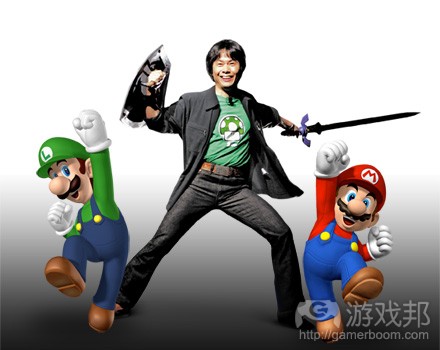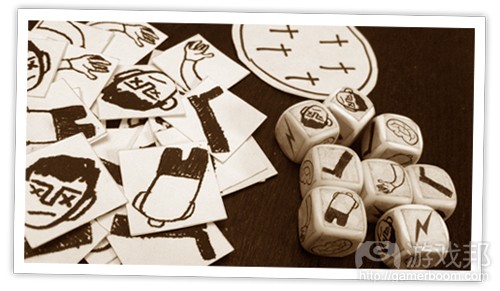解析游戏设计师在开发过程中所扮演的角色
作者:Joost “Oogst” van Dongen
我发现大多数学生都不能理解游戏设计师在游戏创造过程中所扮演的角色,我认为有些开发团队所面临的最大问题便是错误理解了游戏设计师的作用。当然了,游戏设计师的作用可以从很多方面来看,而本文的观点主要是出于我个人的理解。
游戏设计师:“我尝试着为团队中的其他成员确定游戏理念,但是他们却不愿意执行这些理念。你能否教我如何更好地传达自己的观点?”
这是一种完全错误的思维方式。如果是一个真正具有创造性的开发团队,并不是由设计师个人明确基本的游戏理念。这应该是集体参与的过程;可以通过头脑风暴等活动,收集来自团体中每名成员的想法。不只是游戏设计师,任何人都可能拥有好主意。
很多游戏设计学生都认为提出游戏创意是游戏设计师的主要工作。但是事实并非如此。可以说游戏理念的制定只占整个开发过程的1%,设计师并非整个团队中提出合适游戏理念的最佳人选。
程序设计员:“为了制定更好的控制方案,我研究了不同游戏的执行过程,并适当地调整游戏设置,以达到更好的效果。在整个过程中我一直兢兢业业,不是吗?”
虽然这名程序员工作努力,但是却是在为一些错误的工作瞎忙活。游戏设计师为了完成自己的工作也需要程序设计员的协助。所以程序员应该执行控制方案;但是他却不是唯一能够修正并试用这一控制方案的人。程序设计员的主要角色是做好自己的本职工作以确保团队中的其他成员能够顺利工作。必须始终牢记这一点!完成制定设置文件之类的工作,让游戏设计师能够接下去执行自己的任务!
3D美术人员:“我们区分了不同任务,所以我负责的是游戏测试工作。”
为什么要区分不同任务?在一些小团队中,游戏设计师不可能一直忙碌着,因为他需要等待程序设计员编制出新的功能才能继续工作。游戏设计师可以负责制定问卷调查表并分析游戏测试。
团队:“因为没人负责关卡设计,以致我们过迟完成关卡创造。”
你的开发团队中有一名游戏设计师,为何他不能担当起关卡设计的任务?我知道,在较大的开发团队中,游戏设计师和关卡设计师可能是两个完全不同的角色,但是在小团队中,设计师可能便需要同时扮演好这两个角色。很少有小型游戏项目能够让设计师全天候的都有活干。而因为关卡设计主要是关于游戏设置内容,所以游戏设计师便是这份工作的最合适人选。
而且,我仔细观察了许多款游戏,发现除了关卡设计之外,很难找到其它适合游戏设计师的工作。比如早前的《马里奥》游戏。在这些游戏中,几乎所有的设计工作都与关卡设计有关。
游戏设计师:“我只是一名游戏设计师,不可能独立创造所有内容。”
马上学习并掌握一些有益的工具!你不能总是跟着程序设计员的节奏做事,应该在空档期间找些其它事做。游戏设计师可以使用许多工具创造出一个较小的游戏原型。例如《星际争霸II》中创造插件或《Unreal III》中的编辑器,亦或者在Gamemaker、Virtool上创造游戏小物件。也可以利用剪刀,纸张,骰子创造纸质原型。总之,游戏设计师应该尝试着创造更多内容!
游戏设计师的母亲:“那么游戏设计师的工作究竟是什么?”
让我举些例子来说:
调整参数值(如角色的行走速度,跳跃高度,生命值等。)
设计关卡和谜题
设计教程
组织并分析游戏测试
保持系统平衡
研究现有的(相似的)游戏
最后,我想以一句简短直白的话总结全文——“缺乏技巧的游戏设计师是不可能创造出真正优秀的内容。”
游戏邦注:原文发表于2011年1月22日,所涉事件和数据均以当时为准。
(本文为游戏邦/gamerboom.com编译,拒绝任何不保留版权的转载,如需转载请联系:游戏邦)
The role of the game designer
(Due to moving to a new city (Utrecht), I didn’t have the time to gather balancing data for Swords & Soldiers for the post I promised last week. So that topic will be for another time!)
A little while ago I was asked to judge a couple of student game projects from the Utrecht School of the Arts. Seeing a glimpse of the group dynamics that happen within these projects is mightily interesting!
The main thing I saw in that group, was that they had no idea what the game designer’s role should be. I think the things that went wrong in their team, are nice examples of how I think a game designer should function. Of course, there are many ways in which a game development team can function, but this is how I personally see it.
“I tried pitching my concepts to the rest of the team, but they didn’t want to build them. Could you teach me how to communicate my ideas better?” – the game designer
No. This is entirely the wrong way of thinking. In a team of creative people, the game designer does not have to be the one to come up with the basic concepts. This should be a group process. Through brainstorming and things like that, ideas should come up that the entire team likes. Anyone can have good ideas, not just the game designer.
Many game design students seem to think that coming up with ideas is the main job of the game designer. It is not. The idea is just 1% of the development process and the game designer is not better at this than the other people in the team.
“For the control scheme I researched how other games did this, implemented it, and tweaked the settings to make it feel good. I worked so hard, are you not impressed?” – the programmer
No. This programmer worked hard, but on the wrong things. To do their job, game designers need tools from the programmer. So the programmer should implement the control scheme, but he should not be the one to tweak and experiment with it. The main role of the programmer is to empower the rest of the team to do their job. Keep that in mind at all times! Make settings files, or something like that, and let the game designer do his job!
“We divided such tasks, so I was in charge of the playtesting sessions.” – the 3D artist
Why split these tasks? In small teams, it is often difficult enough anyway to constantly keep the game designer busy, since he is probably often waiting for new features from the programmer. Creating questionnaires and analysing playtests is definitely something the game designer should be doing!
“The level was finished way too late, because no one was in charge of level design.” – the team
Euhm, what? You have a game designer in your team, why is he not automatically in charge of the level design? I know that in large teams, game designers and level designers have separate roles, but in smaller team, I think they should usually be one and the same person. It is quite rare for a small game concept to require enough game design work to keep a game designer occupied full-time during the entire project. Since level design is all about gameplay anyway, the game designer is a natural fit to also be a level designer.
Also, I can think of dozens of games where there is hardly any role for the game designer at all if he would not do level design as well. Just think of the old Mario games. Almost all design hours there would be in the level design, hardly anything in the game design!
“I’m a game designer, I cannot create things myself.” – the game designer
Learn some tools, RIGHT NOW! It sucks to always have to wait for a programmer who also needs to do other things. There are tons of tools that are fit for a game designer to create small prototypes. Create mods in the Starcraft II or the Unreal III editor, or create little playable thingies in Gamemaker or Virtools. Also, take scissors, paper and dice and create paper prototypes. Learn to make stuff!
“Then what does a game designer do?” – the game designer’s mother
Let me give some examples:
tweak values (like walking speed, jumping height, health, etc.)
design levels and puzzles
design tutorials
organise and analyse playtests
balancing
research existing (similar) games(source:joostdevblog)









































 闽公网安备35020302001549号
闽公网安备35020302001549号